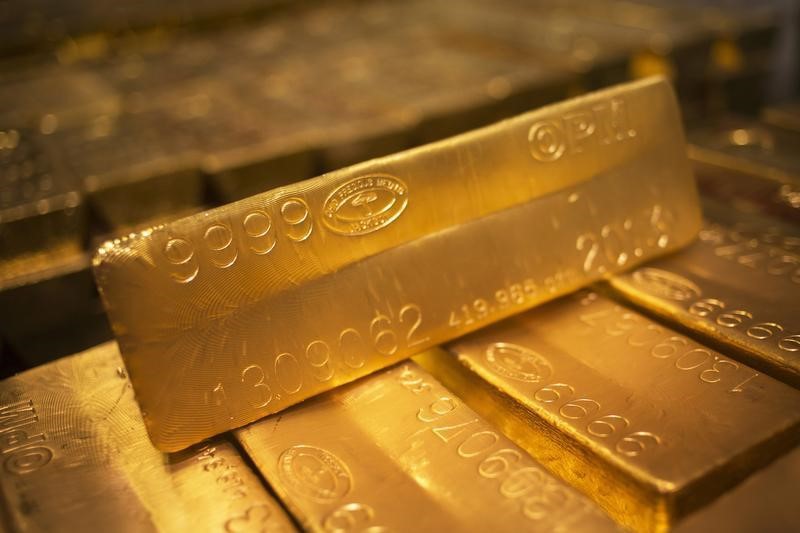Investing.com - Gold prices recovered from the previous session's losses on Monday, amid expectations central banks in China, Japan and Europe will have to implement more stimulus to boost growth.
Expectations of monetary stimulus tend to benefit gold, as the metal is seen as a safe store of value and inflation hedge.
On the Comex division of the New York Mercantile Exchange, gold futures for February delivery picked up $5.20, or 0.44%, to trade at $1,195.60 a troy ounce during European morning hours.
Futures were likely to find support at $1,141.70, the low from December 1, and resistance at $1,215.00, the high from December 3.
Also on the Comex, silver futures for March delivery tacked on 9.4 cents, or 0.58%, to trade at $16.35 a troy ounce.
Expectations for further stimulus mounted after data released on Monday showed that China's trade activity was weaker than expected in November, while Japan's economy shrank more than initially reported in third quarter.
China’s exports climbed 4.7% from a year earlier last month, missing expectations for a 7.9% increase, while imports fell 6.7%, compared to forecasts for a gain of 3.5%.
The country's trade surplus widened to $54.5 billion last month from $45.4 billion in October, compared to estimates for a surplus of $43.2 billion.
Meanwhile, in Japan, revised data showed that the country's economy shrank by an annualized 1.9% in the third quarter, more than the preliminary estimate of a 1.6% decline.
On a quarter-over-quarter basis the economy contracted by 0.5% in the three months to September, compared to a preliminary estimate of a 0.4% contraction.
Elsewhere, in the euro zone, European Central Bank President Mario Draghi said last week that the bank would reassess its stimulus program in the first quarter of 2015.
Draghi said the bank could potentially change the size, scale and composition of its existing stimulus programs. The governing council remains unanimous that it will take further measures, if necessary, he added.
On Friday, Comex gold prices lost $17.30, or 1.43%, to settle at $1,190.40 an ounce, as upbeat U.S. employment data added to expectations that the Federal Reserve could raise interests sooner and faster than previously expected.
The U.S. economy added 321,000 jobs in November, far more than the 225,000 forecast by economists and the largest monthly increase in almost three years.
October’s figure was revised up to 243,000 from a previously reported 214,000 and the unemployment rate remained unchanged at a six-year low of 5.8%.
The unusually strong data saw investors bring forward expectations for the first hike in U.S. interest rates to mid-2015 from September 2015 before the report.
The US dollar index, which measures the greenback against a basket of six major currencies, hit a peak of 89.53, the strongest level since March 2009.
A stronger U.S. dollar usually weighs on gold, as it dampens the metal's appeal as an alternative asset and makes dollar-priced commodities more expensive for holders of other currencies.
Gold prices are likely to remain vulnerable in the near-term amid indications a strengthening U.S. economic recovery will force the Fed to start raising interest rates sooner and faster than previously thought.
Expectations of higher borrowing rates going forward is considered bearish for gold, as the precious metal struggles to compete with yield-bearing assets when rates are on the rise.
Elsewhere in metals trading, copper for March delivery dipped 0.5 cents, or 0.18%, to trade at $2.897 a pound.
The Asian nation is the world’s largest copper consumer, accounting for almost 40% of world consumption last year.
